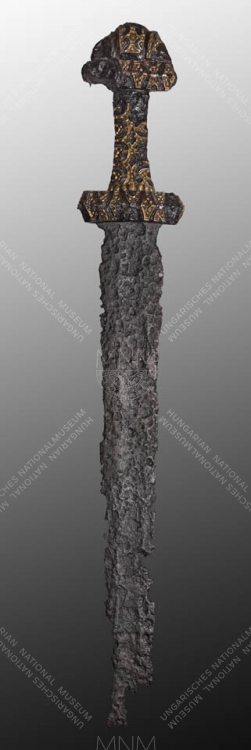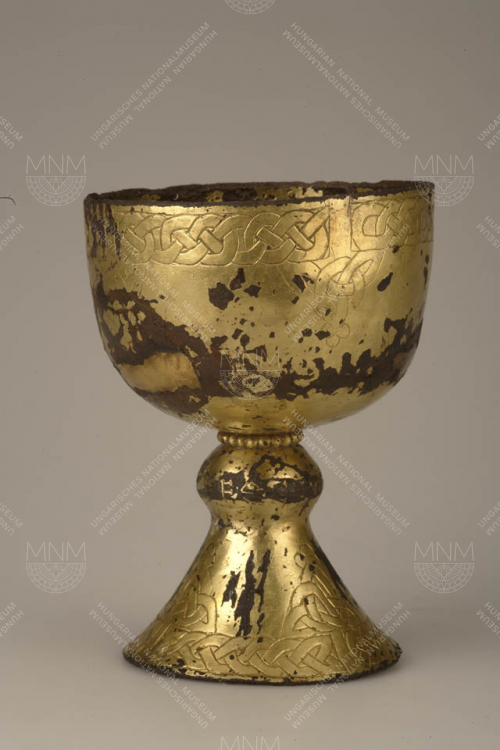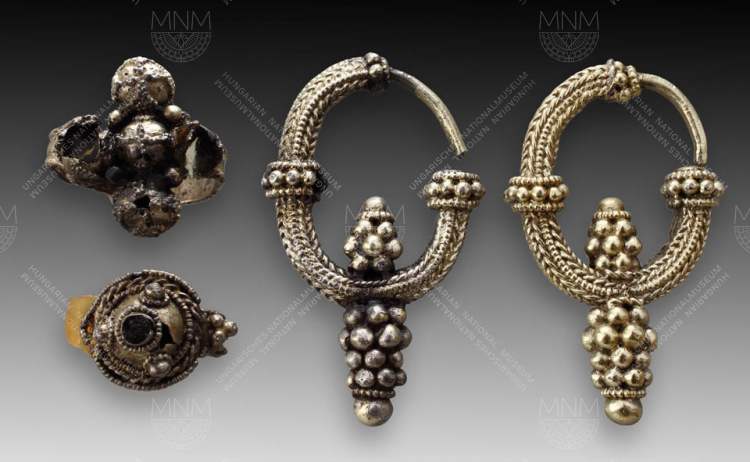
Room 9
In the 9th century, the Carpathian Basin split into two parts. East of the River Danube lived the remaining Avars. With its centre at Mosaburg (Zalavár), the area to the west of the Danube came under the control of the Carolingian Empire. On the basis of its churches and palaces, Mosaburg (Zalavár) rightly received the title ‘royal town’. Artefacts used in attire and other artefacts for use attest to the wealth and varied culture of its inhabitants.
INTERESTING FACTS:
It is from Mosaburg that that we know of the earliest examples of the earliest, rounded, letters (rounded Glagolitic) for writing sounds encountered in the Slavic languages. Developed by Constantinos (Cyril) around 863, the marks were scratched onto the flasks around 866–867 by believers who had become his followers, or possibly by the instructors themselves.
The fragments of stained glass found in Mosaburg’s Pilgrimage Church of Hadrianus the Martyr and nearby are some of the earliest remains of stained-glass windows in the whole of Europe that can be dated with certainly to the mid-9th century.
In Western Europe, the wearing of spurs became general from the Carolingian age onwards, as did the wearing of ornamented belts fitted with a buckle, a loop, and a metal tip for the tongue. In Mosaburg, only young nobles who had died at the beginning of adulthood were buried with their spurs; hence, most of the spurs known from there are small in size.

















